As the automotive industry evolves, two models are making an impactful impression in the SUV segment: the BYD Seal U and the Volvo XC60. Each presents its own unique set of features, technological advancements, and performance metrics that appeal to a wide range of consumers. This article compares these two vehicles, focusing on their specifications, innovations, and overall driving experience.
BYD Seal U vs Volvo XC60 – Which one offers the better deal?
Compare performance, boot capacity, efficiency and price at a glance.
Find out which car is the better choice for you – BYD Seal U or Volvo XC60?
Design and Dimensions
In terms of design, both the BYD Seal U and Volvo XC60 embody modern aesthetics, blending functionality with style. The BYD Seal U boasts a length of 4775 mm, width of 1890 mm, and a height of 1670 mm, making it a formidable presence on the road. It has a spacious trunk capacity of 552 liters, offering ample storage for everyday needs.
On the flip side, the Volvo XC60 measures 4688 mm in length, 1902 mm in width, and 1658 mm in height. Although it's slightly smaller, the XC60's trunk capacity is still impressive, at 483 liters. The differences in dimensions might come down to personal preference regarding space and handling, but both vehicles are designed to provide comfort and functionality.
Powertrain Options
When it comes to powertrains, the BYD Seal U offers multiple engine options, including a plugin hybrid and electric alternatives. It can produce up to 324 HP, with a torque range of 300 to 550 Nm, depending on the configuration. The Seal U can achieve 0-100 km/h in as little as 5.9 seconds and has a top speed of 180 km/h. The electric range reaches up to 500 km, making it an attractive option for environmentally conscious consumers.
In contrast, the Volvo XC60 offers a selection of petrol MHEV and plugin hybrid engines, with power outputs ranging from 250 to an impressive 455 HP. The XC60 also emphasizes performance, achieving 0-100 km/h in as fast as 4.9 seconds. With a slightly lower electric range of 80 km, the XC60 makes a solid case for those seeking a blend of performance and efficiency.
Efficiency and Consumption
The BYD Seal U has set a benchmark in efficiency, with consumption figures as low as 0.9 L/100km and electric consumption reaching 19.9 kWh/100km. These figures showcase the model’s commitment to sustainability without compromising performance.
The Volvo XC60 shows competitive consumption metrics as well, particularly in its hybrid variants, where it achieves 0.9 L/100km in electric mode. However, its petrol variants consume 7.7 L/100km, which might deter some eco-conscious drivers. The XC60's CO2 emissions also vary, with values from 22 g/km for electric modes up to 174 g/km for petrol, showcasing a trade-off between power and emissions.
Innovative Technology
Both vehicles are packed with advanced technology, with BYD integrating features like an interactive infotainment system and various driver-assistance systems. The Seal U provides a seamless digital experience with its touchscreen controls and smartphone connectivity, ensuring a modern driving experience.
The Volvo XC60, on the other hand, includes its well-known Sensus infotainment system, which offers a user-friendly interface and connectivity options. Safety is a strong suit for Volvo, equipping the XC60 with advanced safety features, including automatic emergency braking, adaptive cruise control, and lane-keeping assist, ensuring peace of mind for drivers and passengers alike.
Final Thoughts: Which SUV Reigns Supreme?
Choosing between the BYD Seal U and the Volvo XC60 ultimately comes down to individual preferences and priorities. The BYD Seal U stands out for its eco-friendliness, impressive electric range, and efficient hybrids. Meanwhile, the Volvo XC60 shines in performance, safety features, and premium comfort. Both models bring exceptional value to the SUV market, ensuring drivers do not need to compromise on what they desire in their next vehicle.
As both brands continue to innovate and expand their offerings, the competition between traditional automakers and new electric vehicle entrants will be one to watch. Whether prioritizing sustainability or performance, the BYD Seal U and Volvo XC60 cater to the evolving preferences of modern drivers.
Here’s where it gets real: The technical differences in detail
Costs and Efficiency:
When it comes to price and running costs, the biggest differences usually appear. This is often where you see which car fits your budget better in the long run.
BYD Seal U has a significantly advantage in terms of price – it starts at 34300 £, while the Volvo XC60 costs 49200 £. That’s a price difference of around 14914 £.
Fuel consumption also shows a difference: BYD Seal U manages with 0.40 L and is therefore convincingly more efficient than the Volvo XC60 with 2.80 L. The difference is about 2.40 L per 100 km.
As for range, the BYD Seal U performs significantly better – achieving up to 500 km, about 418 km more than the Volvo XC60.
Engine and Performance:
Power, torque and acceleration are the classic benchmarks for car enthusiasts – and here, some clear differences start to show.
When it comes to engine power, the Volvo XC60 has a noticeable edge – offering 455 HP compared to 324 HP. That’s roughly 131 HP more horsepower.
In acceleration from 0 to 100 km/h, the Volvo XC60 is evident quicker – completing the sprint in 4.90 s, while the BYD Seal U takes 5.90 s. That’s about 1 s faster.
There’s no difference in top speed – both reach 180 km/h.
There’s also a difference in torque: Volvo XC60 pulls distinct stronger with 709 Nm compared to 550 Nm. That’s about 159 Nm difference.
Space and Everyday Use:
Cabin size, boot volume and payload all play a role in everyday practicality. Here, comfort and flexibility make the difference.
Both vehicles offer seating for 5 people.
In curb weight, Volvo XC60 is minimal lighter – 1900 kg compared to 1940 kg. The difference is around 40 kg.
In terms of boot space, the BYD Seal U offers slightly more room – 552 L compared to 483 L. That’s a difference of about 69 L.
In maximum load capacity, the Volvo XC60 performs barely noticeable better – up to 1543 L, which is about 78 L more than the BYD Seal U.
When it comes to payload, Volvo XC60 noticeable takes the win – 550 kg compared to 410 kg. That’s a difference of about 140 kg.
Who comes out on top?
Overall, the BYD Seal U shows itself to be wins the duel decisively and secures the title of DriveDuel Champion.
It convinces with the more balanced overall package and proves to be the more versatile choice for everyday use.
 @ BYD Auto / BYD Global Media
@ BYD Auto / BYD Global Media
BYD Seal U
BYD Seal U
The BYD Seal U presents itself as a sophisticated addition to the electric vehicle market, blending sleek design with cutting-edge technology. Its modern aesthetic is complemented by a spacious interior, offering both comfort and functionality for drivers and passengers alike. With advanced features prioritising sustainability and performance, it represents a bold step forward in eco-friendly motoring.
details @ BYD Auto / BYD Global Media
@ BYD Auto / BYD Global Media
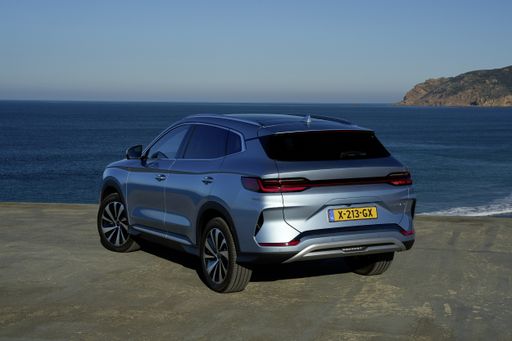 @ BYD Auto / BYD Global Media
@ BYD Auto / BYD Global Media
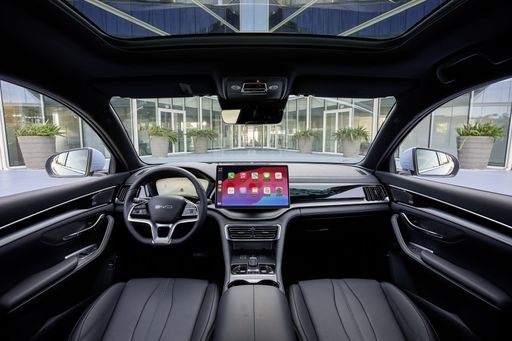 @ BYD Auto / BYD Global Media
@ BYD Auto / BYD Global Media
Volvo XC60
The Volvo XC60 blends Scandinavian calm with confident presence, offering a cabin that feels plush without shouting for attention. It’s a smart pick for buyers after a composed ride, clever practicality and thoughtful safety touches — it even makes running the family shuttle feel almost serene, which is a small miracle.
details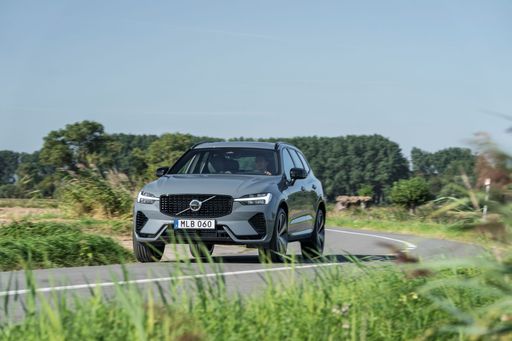 @ Volvo Cars
@ Volvo Cars
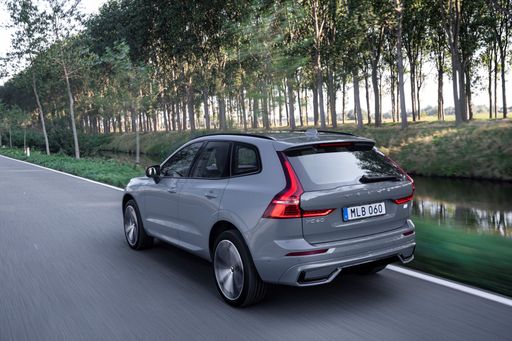 @ Volvo Cars
@ Volvo Cars
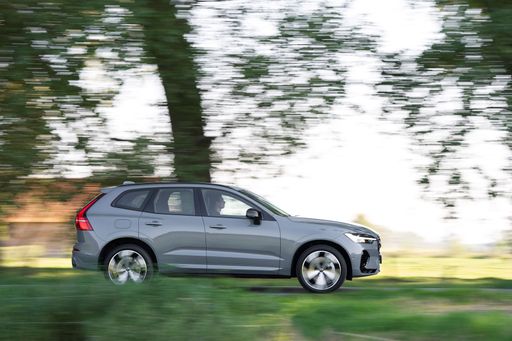 @ Volvo Cars
@ Volvo Cars
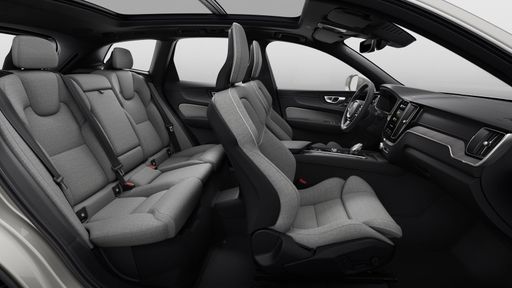 @ Volvo Cars
@ Volvo Cars
 @ Volvo Cars
@ Volvo Cars
 @ BYD Auto / BYD Global Media
@ BYD Auto / BYD Global Media
|
 @ Volvo Cars
@ Volvo Cars
|
|
|
|
Costs and Consumption |
|
|---|---|
|
Price
34300 - 39800 £
|
Price
49200 - 75100 £
|
|
Consumption L/100km
0.4 - 1.2 L
|
Consumption L/100km
2.8 - 7.5 L
|
|
Consumption kWh/100km
19.9 - 20.5 kWh
|
Consumption kWh/100km
-
|
|
Electric Range
70 - 500 km
|
Electric Range
74 - 82 km
|
|
Battery Capacity
-
|
Battery Capacity
14.70 kWh
|
|
co2
0 - 26 g/km
|
co2
64 - 169 g/km
|
|
Fuel tank capacity
60 L
|
Fuel tank capacity
71 L
|
Dimensions and Body |
|
|---|---|
|
Body Type
SUV
|
Body Type
SUV
|
|
Seats
5
|
Seats
5
|
|
Doors
5
|
Doors
5
|
|
Curb weight
1940 - 2147 kg
|
Curb weight
1900 - 2150 kg
|
|
Trunk capacity
425 - 552 L
|
Trunk capacity
468 - 483 L
|
|
Length
4775 - 4785 mm
|
Length
4708 mm
|
|
Width
1890 mm
|
Width
1902 mm
|
|
Height
1668 - 1670 mm
|
Height
1651 - 1655 mm
|
|
Max trunk capacity
1440 - 1465 L
|
Max trunk capacity
1528 - 1543 L
|
|
Payload
410 kg
|
Payload
510 - 550 kg
|
Engine and Performance |
|
|---|---|
|
Engine Type
Plugin Hybrid, Electric
|
Engine Type
Petrol MHEV, Plugin Hybrid
|
|
Transmission
Automatic
|
Transmission
Automatic
|
|
Transmission Detail
CVT, Reduction Gearbox
|
Transmission Detail
Automatic Gearbox
|
|
Drive Type
Front-Wheel Drive, All-Wheel Drive
|
Drive Type
All-Wheel Drive
|
|
Power HP
218 - 324 HP
|
Power HP
250 - 455 HP
|
|
Acceleration 0-100km/h
5.9 - 9.6 s
|
Acceleration 0-100km/h
4.9 - 6.9 s
|
|
Max Speed
170 - 180 km/h
|
Max Speed
180 km/h
|
|
Torque
300 - 550 Nm
|
Torque
350 - 709 Nm
|
|
Number of Cylinders
4
|
Number of Cylinders
4
|
|
Power kW
160 - 238 kW
|
Power kW
184 - 335 kW
|
|
Engine capacity
1497 - 1498 cm3
|
Engine capacity
1969 cm3
|
General |
|
|---|---|
|
Model Year
2024
|
Model Year
2025
|
|
CO2 Efficiency Class
B, A
|
CO2 Efficiency Class
F, B
|
|
Brand
BYD
|
Brand
Volvo
|
What drive types are available for the BYD Seal U?
The BYD Seal U is available as Front-Wheel Drive or All-Wheel Drive.
The prices and data displayed are estimates based on German list prices and may vary by country. This information is not legally binding.
